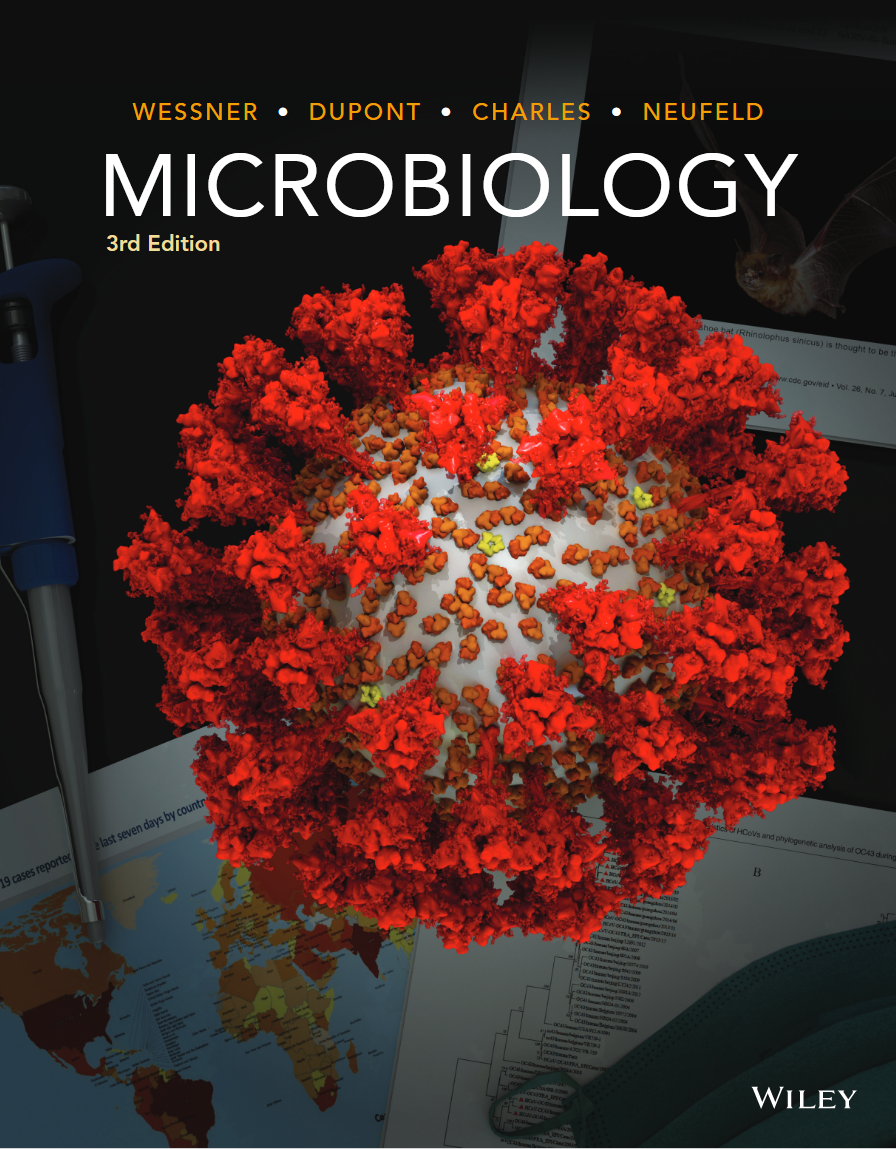
Microbiology, 3rd Edition
By David R. Wessner, Christine DuPont, Trevor C. Charles, and Josh D. Neufield
Microbiology helps students develop a meaningful connection with the material through the incorporation of primary literature, applications, and examples that provide an ideal balance of comprehensive and in-depth coverage of core concepts. 3-D animations, chapter videos, and primary research-based assessments in WileyPLUS provide an immersive learning experience — incorporating many relevant applications and supporting the course’s unique focus on current research and experimentation. Information is framed around the three pillars of physiology, ecology and genetics, highlighting their interconnectedness and helping students see a bigger picture. This innovative organization establishes a firm foundation for later work and provides a perspective on real-world applications of microbiology.
Schedule a Demo Request Instructor AccountWant to learn more about WileyPLUS? Click Here
Interactive Tree of Life: This new innovative feature helps students understand microbial classification even more completely by showing the evolutionary relationships of these organisms. Students can see how microbes profiled throughout the book in Microbes in Focus boxes are related. When viewing this tree, students can click on a domain to get an expanded view that shows selected phyla within that domain. Clicking on a specific phylum, students then see the Microbes in Focus boxes that describe species within that phylum.

Primary Research Article Summaries: Students are exposed to primary literature to highlight real-world microbiology and help build critical thinking skills. Mini-Papers within each chapter summarize and interpret primary research articles to sharpen students’ critical thinking skills and deepen their understanding of what microbiologists do.
3-D Animations: Over 125 compelling 3D animations bring course content to life and help students visualize and master complex topics in microbiology. A series of gradable assessments specific to the animations are assignable in WileyPLUS.
Chapter Opener and “Rest of the Story” Videos: Videos introduce each chapter by providing current examples of microbiology in action or detailing a historically relevant discovery. “Rest of the Story” videos reconnect students to the opening videos helping them make deeper connections with the content.
What’s New
-
- Interactive Tree of Life: This innovative new feature improves students’ understanding of microbial diversity by showing the evolutionary relationships of these organisms. Using the Tree of Life, students can see how microbes profiled throughout the book in Microbes in Focus boxes are related. When viewing this tree, students can click on a domain to get an expanded view that shows selected phyla within that domain. By then clicking on a specific phylum, students see the Microbes in Focus boxes that describe species within that phylum, helping them understand microbial classification even more completely.
- New Coverage of SARS-CoV-2 and the impacts of COVID-19 as it relates to the importance of an interdisciplinary response to a global pandemic.
- Many new Mini-Papers added to improve critical thinking.
- Perspective Boxes that emphasize scientific thinking on a range of hot topics, such as making microbiology more inclusive, coronaviruses and bats, Koch’s postulates and Alzheimer’s disease, and how biotechnology has harnessed genes of a plant to make a better meatless burger.
- Several new Microbes in Focus boxes. This feature highlights and integrates microbes in the text where they are relevant, rather than compiling them in an unlinked stand-alone “survey” section.

DAVID R. WESSNER is a professor of biology at Davidson College. Wessner teaches introductory biology and courses on microbiology, genetics, and HIV/AIDS. His research focuses on viral pathogenesis. He is a member of the American Society for Microbiology Committee for K–12 Education. He also is a coauthor of Vision and Change in Undergraduate Education: A Call to Action. Prior to joining the faculty at Davidson, Wessner conducted research at the Navy Medical Center. He earned his Ph.D. in microbiology and molecular genetics from Harvard University and his B.A. in biology from Franklin and Marshall College.

CHRISTINE DUPONT is a lecturer in the department of biology at the University of Waterloo in Southern Ontario, Canada. Dupont teaches undergraduate courses in genetics, biotechnology, virology, and bacterial pathogenesis. She earned a Ph.D. from Massey University, Faculty of Veterinary Science, New Zealand; a B.Ed. from the University of Windsor, Ontario; and an M.Sc. and B.Sc. in microbiology from the University of Guelph, Ontario. Prior to her Ph.D. studies, Dupont taught high school science for several years, developing a passion for teaching and working with students.

TREVOR C. CHARLES is a professor in the department of biology at the University of Waterloo. Charles teaches undergraduate courses in microbiology and synthetic biology and runs a research program that focuses on plant microbe interactions and functional metagenomics. Prior to joining the faculty at Waterloo, he held a faculty position at McGill University and did postdoctoral research at the University of Washington. He earned his Ph.D. from McMaster University and his B.Sc. in Microbiology from the University of British Columbia.

JOSH D. NEUFELD is a professor in the department of biology at the University of Waterloo. He explores microbiology with undergraduate students in the classroom and both undergraduate and graduate students in his microbial ecology research program. Neufeld earned his B.Sc. and M.Sc. in microbiology from McGill University’s Macdonald Campus prior to completing a Ph.D. at the University of British Columbia and postdoctoral research at the University of Warwick.
1. The Microbial World
2. Bacteria
3. Eukaryal Microbes
4. Archaea
5. Viruses
6. Cultivating Microorganisms
7. DNA Replication and Gene Expression
8. Viral Replication Strategies
9. Bacterial Genetic Analysis
10. Microbial Genomics
11. Regulation of Gene Expression
12. Microbial Biotechnology
13. Metabolism
14. Biogeochemical Cycles
15. Microbial Ecosystems
16. The Microbiology of Food and Water
17. Microbial Symbionts
18. Introduction to Infectious Diseases
19. Innate Host Defenses Against Microbial Invasion
20. Adaptive Immunity
22. Viral Pathogenesis
23. Eukaryal Microbe Pathogenesis
24. Control of Infectious Diseases

